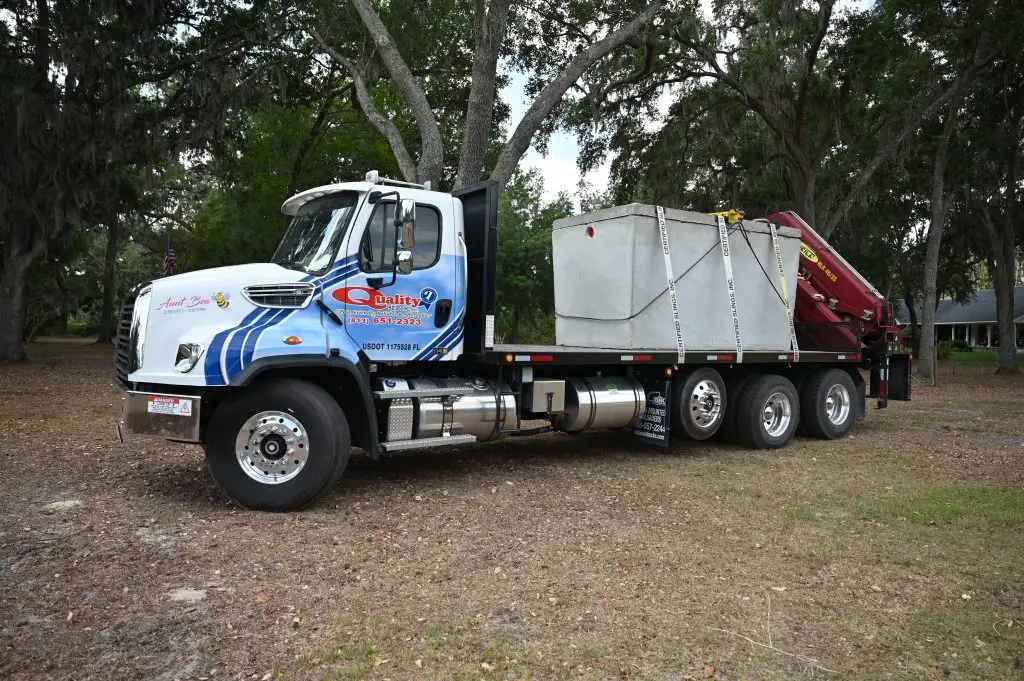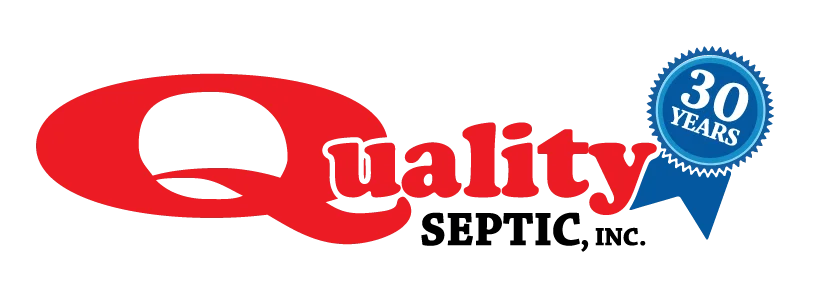
At Quality Septic Inc. we know firsthand how important it is to match your septic system to the right soil type on your property. Whether you’re building a new home or upgrading an existing system, the type of soil you have plays a significant role in how well your septic system will function. From sandy coasts to clay-rich inland areas, soil types can impact septic performance, so it’s imperative that you know what type of soil you have, and which septic system will work best. The best way to do this is to hire a septic services professional with experience in this area. A good septic provider will have no problem identifying your soil type and recommending the best system for it.
When hiring a septic company for the job, there are three common types of soil to look out for. Because your septic system relies on the surrounding soil to naturally filter and absorb wastewater, each needs a specific type of septic system to perform at its best. Once wastewater leaves your septic tank, it travels into the drain field, where it percolates through the soil. This process removes harmful bacteria, viruses, and nutrients before the water returns to the groundwater system. If the soil is too dense, water can’t drain properly. This leads to backups, water pooling, and even system failure. If it’s too loose or sandy, wastewater may pass through too quickly, not giving the soil enough time to properly filter contaminants. That’s why understanding your soil type is essential before installing or replacing a septic system.
Common Soil Types and the Right Septic Systems for Each
1. Sandy Soil
If you live near the coast – think areas like Clearwater, Daytona, or the Panhandle – you’re likely sitting on sandy soil. This type of soil is incredibly porous, which means water drains through it very quickly. At first thought, that might seem like a good thing. But for septic systems, it poses a big challenge. This is because the water moves through too fast, it doesn’t get enough time to be naturally filtered by the soil, increasing the risk of untreated waste reaching groundwater sources. This can lead to contamination of nearby groundwater, especially in high water table areas.
Best Systems for Sandy Soil:
- Performance-Based Treatment Systems (PBTS): These are custom-designed septic solutions that go above and beyond traditional treatment standards. PBTS units treat wastewater to a much higher quality before it even reaches the drain field. That extra level of treatment is big in sandy environments where nature doesn’t do as much filtering. These systems often include disinfection and nutrient removal stages, making them ideal for environmentally sensitive areas like coastal zones or near water bodies.
- Timed Dosing Systems: Sandy soils absorb water so fast that a steady, uncontrolled flow of wastewater can overwhelm the area and reduce effectiveness. Timed dosing systems solve this by using a pump to release wastewater at controlled intervals. This gives the drain field a break between cycles, allowing it to better absorb and treat effluent without flooding the soil or risking bypass into groundwater.
- Sand Filter Systems (Engineered): Even though sandy soil is already present, engineered sand filters provide a consistent, regulated medium for additional filtration. These systems act as a buffer between the septic tank and the native soil, helping to capture solids, nutrients, and bacteria before the water continues through the drain field. It’s a way of slowing the process down for better treatment.
2. Clay and Loamy Clay Soil
Inland regions and parts of North and Central Florida often contain clay or loamy clay soil. This type of soil is dense, with poor drainage and slow absorption. These soils hold onto water like a sponge, which is great for crops, but not so great for septic systems. Because the water doesn’t drain easily, it can sit on top of the ground, back up into your home, or even cause system failure if you’re not using the right solution.
Best Systems for Clay Soil:
- Mound Systems: This is one of the most trusted options for clay-heavy areas. A mound system elevates the drain field above the natural soil using layers of sand and gravel. This improves drainage and keeps the treated wastewater far away from the dense, slow-draining clay below. Not only does this protect your yard from soggy patches, but it also keeps your system functioning properly year-round, even after heavy rain.
- Aerobic Treatment Units (ATUs): Think of these like a mini wastewater treatment plant in your backyard. ATUs introduce oxygen into the tank to help aerobic bacteria break down waste faster and more effectively than conventional systems. That means by the time the waste reaches your drain field, it’s already cleaner and easier for the slow-draining soil to handle. This is a great choice if you’re short on space or want a higher level of treatment.
- Drip Irrigation Systems: Instead of dumping wastewater all at once, drip systems release it slowly and evenly across a wide area using special tubing buried just below the surface. This is especially useful in clay soils, where slow absorption means that spreading the waste out over time and distance makes a big difference. It helps prevent overloading any single area of your yard and keeps everything running well.
3. Organic or Muck Soils
Down in the Everglades region, or throughout South Florida (think Miami-Dade, Collier, or parts of Palm Beach) you’ll find what’s known as muck or organic soils. These soils are dark, rich, and often very soft. They’re high in decomposed plant material and tend to retain moisture. That might be great for your garden, but not for your septic system. These soils change over time as organic matter breaks down, which can impact system stability and performance. Plus, the water table tends to be high in these regions, adding another layer of complexity.
Best Systems for Muck or Organic Soil:
- Engineered Fill Systems: Because muck soils lack the stability and consistent percolation needed for a traditional drain field, an engineered fill system is often the answer. This involves importing high-quality, approved sand or sandy loam to create a new, artificial soil layer that sits on top of the existing soil. The drain field is then built into this imported fill, ensuring proper treatment and structural support. It’s like creating a brand-new, septic-friendly environment right in your backyard.
- Elevated Mound or ATU Systems: Just like with clay soil, mound systems and ATUs offer excellent solutions for high-water-table areas. The mound keeps your drain field above the saturated native soil, and the ATU ensures the wastewater is treated thoroughly before it’s released. This one-two punch is especially important in South Florida, where protecting drinking water and natural wetlands is a top priority.
- Lift Stations with Alarms: In very low-lying or flood-prone areas, gravity isn’t enough to move wastewater effectively. Lift stations are specialized pumps that push wastewater up to the treatment area or drain field. They often include alarms to alert you to any problems (like power failure or pump malfunction), offering peace of mind in areas where water can rise quickly or backup is a risk.
Get it Right with Quality Septic Inc.
As you can see, when it comes to septic systems, one size does not fit all, especially in a state as geologically diverse as Florida. Whether your property sits on beachside sand or inland clay, making the right choice starts with understanding your soil.
Contact Quality Septic Inc. today to schedule your soil analysis and get expert guidance on the best septic system for your Florida home.
